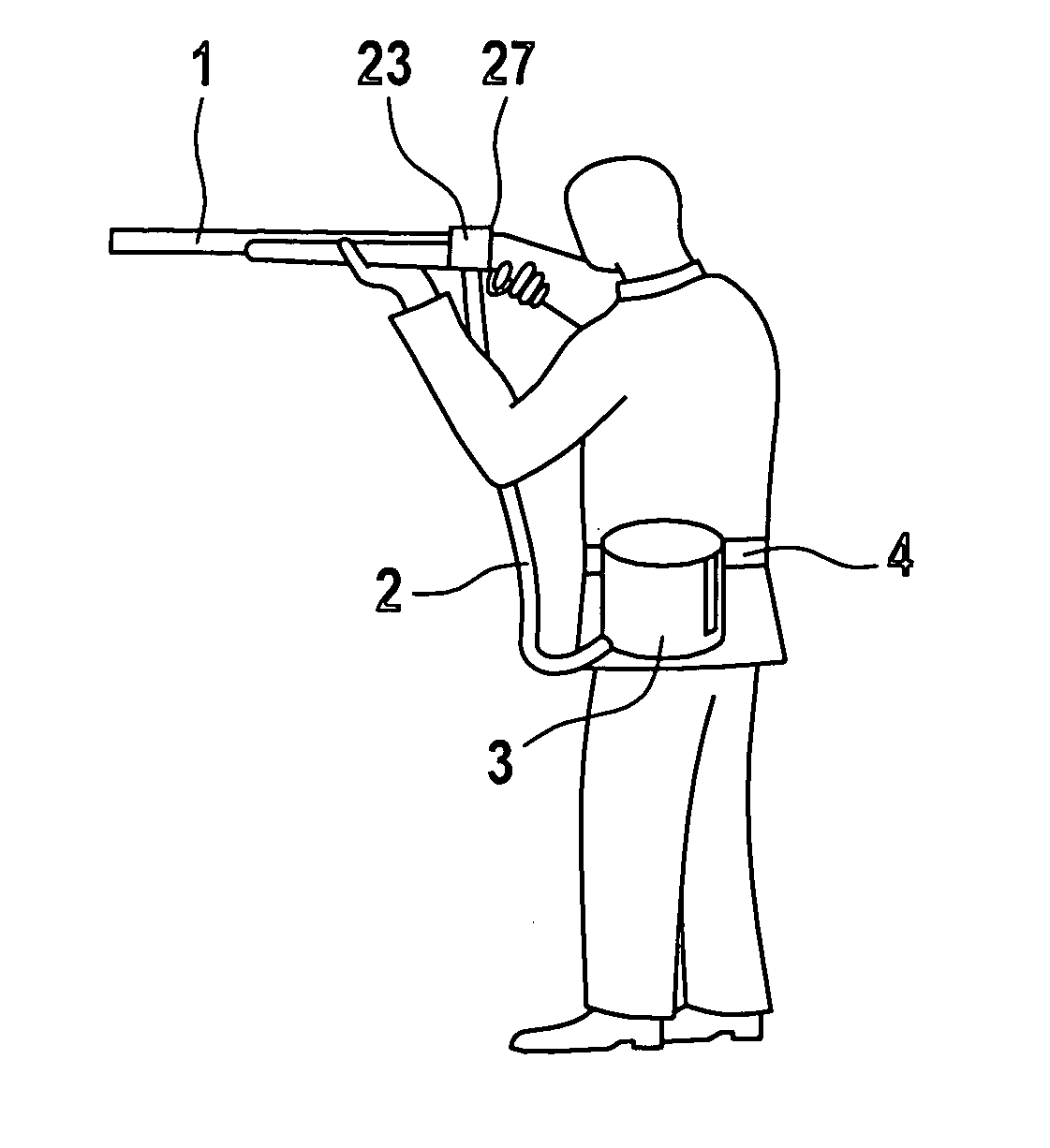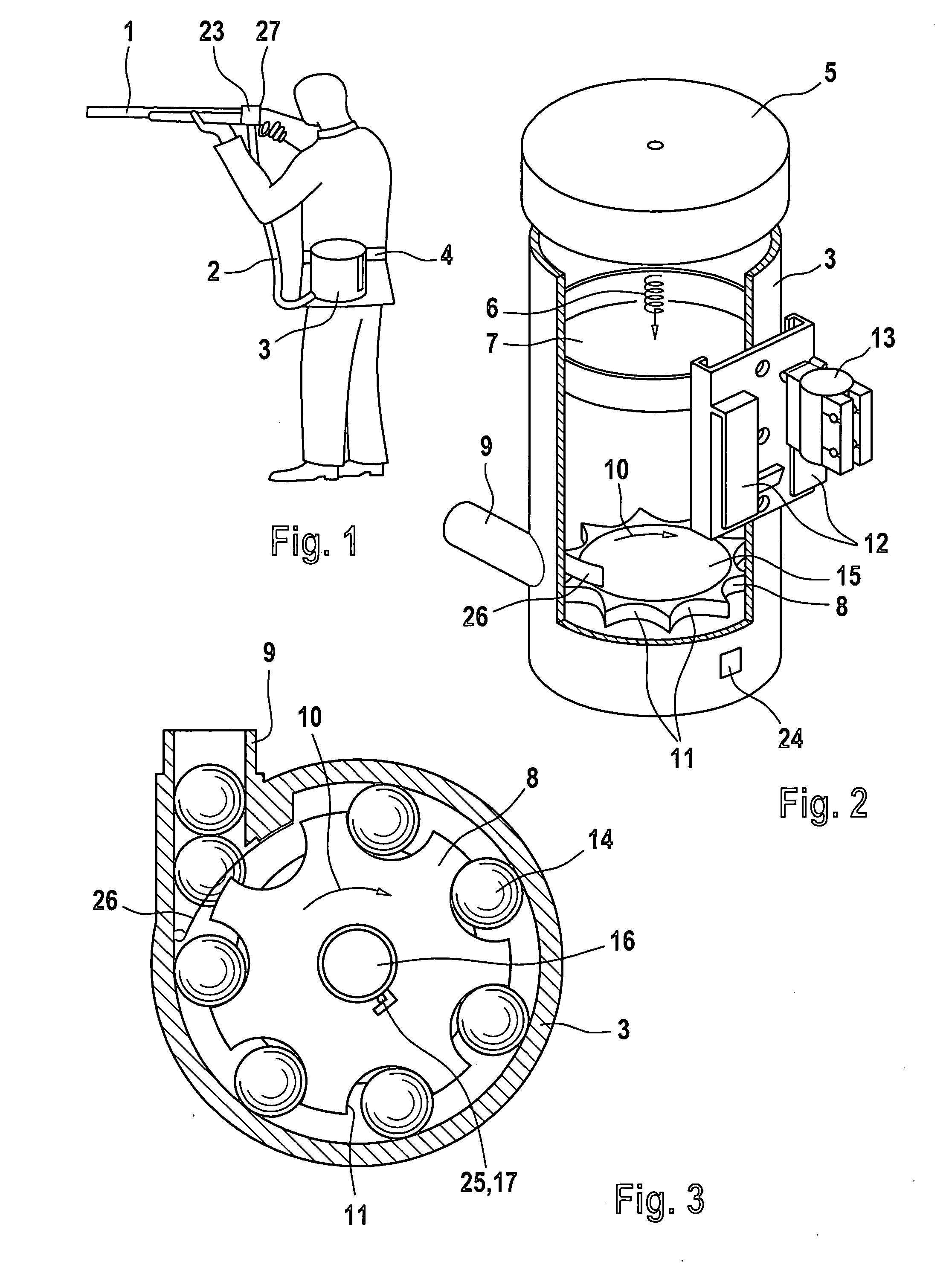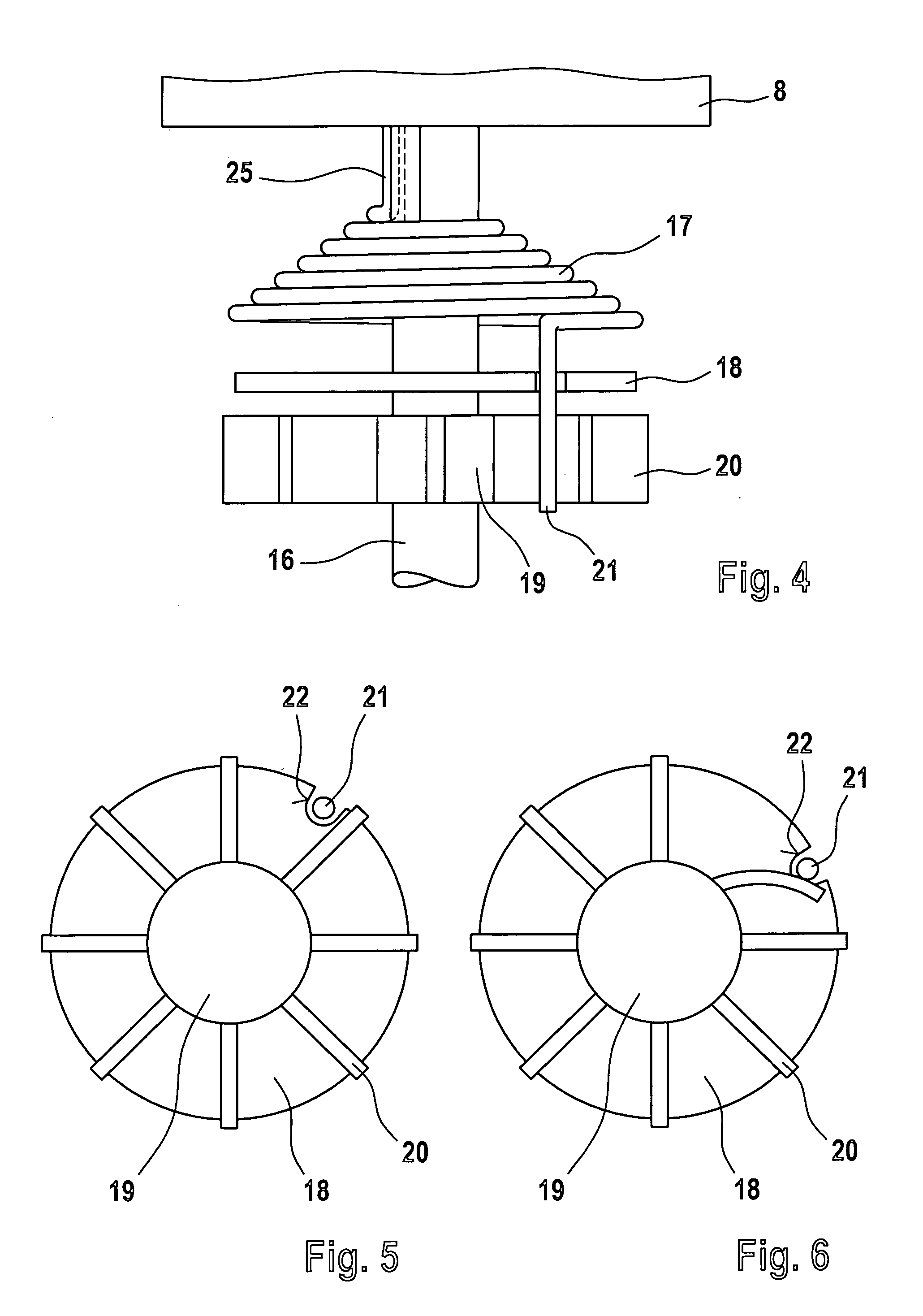Device for storing projectile balls and feeding them into the projectile chamber of a gun
- Summary
- Abstract
- Description
- Claims
- Application Information
AI Technical Summary
Benefits of technology
Problems solved by technology
Method used
Image
Examples
Embodiment Construction
[0020] According to FIG. 1, a shooter uses an arm 1, for example an air gun for so-called paint balls, which is connected with a ball container 3 containing balls 14, through a flexible feeder tube 2. The balls 14 are fed in a continuous process through a feeder 8 (to be described below) to the projectile chamber of the gun 1. In this process, they are under pressure from a spring, so that every time a ball is fired and the empty projectile chamber opens, a new ball is fed from the feeder tube 2 into the projectile chamber. The ball container 3 is attached to the belt 4 of the shooter.
[0021] According to FIG. 3, the ball container 3 is of a cylindrical shape and provided with a cover lid 5 connected with a pressure plate 7 via a schematically indicated tension spring 6. The pressure plate 7, under the impact from the spring 6, pushes the contents of the container away from the open end of the container, shut by the lid, to its other end. At this other end is the feeder 8 that feeds...
PUM
 Login to View More
Login to View More Abstract
Description
Claims
Application Information
 Login to View More
Login to View More - R&D
- Intellectual Property
- Life Sciences
- Materials
- Tech Scout
- Unparalleled Data Quality
- Higher Quality Content
- 60% Fewer Hallucinations
Browse by: Latest US Patents, China's latest patents, Technical Efficacy Thesaurus, Application Domain, Technology Topic, Popular Technical Reports.
© 2025 PatSnap. All rights reserved.Legal|Privacy policy|Modern Slavery Act Transparency Statement|Sitemap|About US| Contact US: help@patsnap.com



